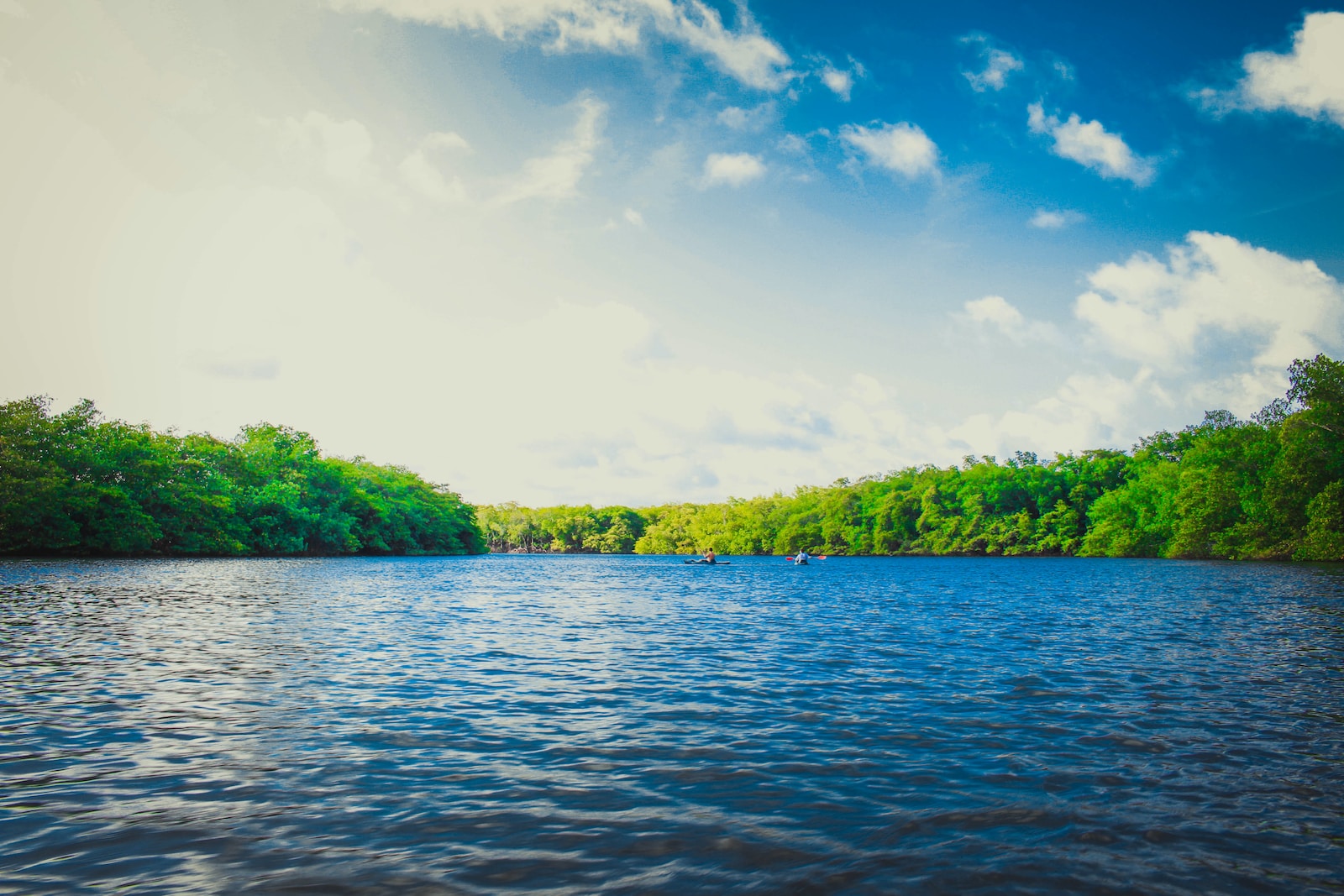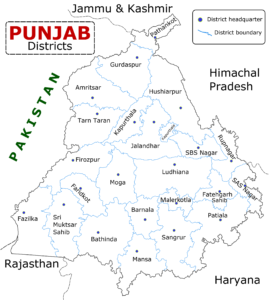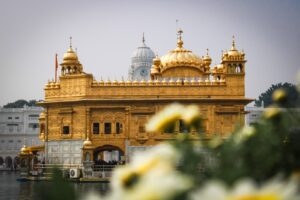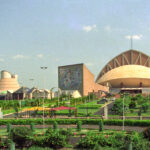Welcome to the discussion about the Five rivers of Punjab.
Beas, a shimmering ribbon of purity, tells stories of tradition and spirituality. The Chenab, a mighty force running through the heart, binds together the diverse threads of Punjab’s soil. Jhelum, a historical enterprise, tells the stories of ancient civilizations along its banks. Ravi, gentle but powerful, holds the earth in his nurture. And the Sutlej, the powerhouse of progress, propels Punjab into the future.
| River | Length (KM) | Origin | Mouth | States/Regions Crossed | Historical Significance |
|---|---|---|---|---|---|
| Sutlej | 1450 | Himalayas (Tibet) | Chenab River (Pakistan) | India (Himachal Pradesh, Punjab), Pakistan | Cradle of Indus Valley Civilization; Sikh holy sites |
| Beas | 460 | Himalayas (Kullu, Himachal Pradesh) | Sutlej River (Punjab) | India (Himachal Pradesh, Punjab) | Vedic texts; ancient pilgrimage sites |
| Ravi | 725 | Himalayas (Himachal Pradesh) | Chenab River (Pakistan) | India (Himachal Pradesh, Punjab, Jammu & Kashmir), Pakistan | Centre of ancient Gandhara Kingdom; Mughal artistic inspiration |
| Chenab | 1087 | Himalayas (Himachal Pradesh) | Indus River (Pakistan) | India (Himachal Pradesh, Jammu & Kashmir), Pakistan | Vedic epics; Indus Valley sites |
| Jhelum | 772 | Himalayas (Kashmir) | Chenab River (Pakistan) | India (Jammu & Kashmir), Pakistan | Greek & Mughal battlefields; trade routes |
Five Rivers of Punjab
Greek Names of Five Rivers of Punjab
The Greek names for the five rivers of Punjab are not commonly used or recognized in historical or geographical contexts. The names of these rivers have historical and cultural significance in the Indian subcontinent, and they are typically referred to by their traditional names in the languages of the region.
- Beas River: The Beas River is known as “Vipasa” in ancient Sanskrit texts.
- Chenab River: The Chenab River is known as “Chandrabhaga” or “Asikni” in ancient texts.
- Jhelum River: The Jhelum River is known as “Vitasta” in Sanskrit.
- Ravi River: The Ravi River is known as “Parushni” in ancient texts.
- Sutlej River: The Sutlej River is known as “Shatadru” in Sanskrit.
1. Sutlej (ਸਤਲੁਜ)
| Height | 4555 Meter |
| Source/Origin Place | Near Rakas Lake, Manasarovar Glacier, Tibet |
| Length | 1450 KM |
| Ancient Name | Satadru |
| Main Cities Located on the Banks of Sutlej River | Ropar, Filour, Harike Pattan and Ferozpur |
One of the Longest River from Five Rivers of Punjab: Sutlej River embarks on a captivating journey that originates from the Tibetan plateau, an elevated region known for its rugged terrains and pristine landscapes. This river, a tributary of the Indus, begins its course in the Mansarovar Lake, located in the awe-inspiring Himalayas. As it descends from this lofty origin, the Sutlej winds its way through the challenging topography, carving its path with determination and vigor.
Entering the Indian subcontinent through the Shipki La pass in Himachal Pradesh, the Sutlej introduces itself to the diverse landscapes of northern India. Here, it becomes an integral part of the states of Himachal Pradesh and Punjab, making its presence known in the agricultural heartland of the country.
The Sutlej’s journey takes a noteworthy turn as it converges with the Bhakra-Nangal Dam, an engineering marvel that harnesses its force to generate hydroelectric power. This dam, located in the state of Himachal Pradesh, stands as a testament to human ingenuity, utilizing the Sutlej’s flow not only for power generation but also for flood control and irrigation management.
Hydroelectric Projects on Sutlej River
The Sutlej River, a significant watercourse in northern India, has been harnessed for various dam projects that serve critical purposes such as hydroelectric power generation, flood control, and irrigation. Here are some notable dam projects on the Sutlej River:
- Bhakra Dam:
- Location: Bilaspur, Himachal Pradesh
- Purpose: Bhakra Dam is one of the largest dams in India and plays a pivotal role in hydroelectric power generation, providing irrigation water to the states of Punjab, Haryana, and Rajasthan. It also helps control floods in the downstream areas.
- Nangal Dam:
- Location: Nangal, Punjab
- Purpose: Nangal Dam is part of the Bhakra-Nangal Project and is primarily designed for hydroelectric power generation. It regulates the release of water downstream and contributes to irrigation in the region.
- Karcham Wangtoo Dam:
- Location: Kinnaur district, Himachal Pradesh
- Purpose: This dam is a run-of-the-river hydroelectric project that harnesses the power of the Sutlej River to generate electricity. It is an essential contributor to India’s renewable energy capacity.
- Nathpa Jhakri Dam:
- Location: Kinnaur district, Himachal Pradesh
- Purpose: Nathpa Jhakri Dam is another major hydroelectric project on the Sutlej River. It is designed to generate electricity and also aids in flood control.
- Rampur Hydropower Project:
- Location: Shimla district, Himachal Pradesh
- Purpose: This run-of-the-river hydroelectric project is situated on the Sutlej River and contributes to the generation of clean energy for the region.
- Luhri Hydroelectric Project:
- Location: Kullu district, Himachal Pradesh
- Purpose: Under development, the Luhri Hydroelectric Project aims to utilize the Sutlej’s flow to generate electricity and contribute to the overall energy infrastructure.
These dam projects on the Sutlej River highlight the region’s commitment to sustainable development, utilizing the river’s potential to meet the growing energy demands and ensuring water resources for agricultural needs.
2. Beas (ਬਿਆਸ)
| Height | 4000 Meter |
| Origin Place | Beas Kund, Himachal Pradesh |
| Length | 470 KM |
| Ancient Name | Vipas |
| Main City Located on the Banks of River | Harike Pattan |
Hydroelectric Projects on Beas River
- Pandoh Dam:
- Location: Mandi district, Himachal Pradesh.
- Purpose: The Pandoh Dam primarily serves as a diversion dam, redirecting water from the Beas to the Sutlej River through a tunnel. It contributes to the Beas-Sutlej Link Project, facilitating better water management for irrigation in both river basins.
- Bhuntar Dam:
- Location: Kullu district, Himachal Pradesh.
- Purpose: Bhuntar Dam is a run-of-the-river hydroelectric project. It harnesses the potential energy of the flowing Beas River to generate electricity, contributing to the region’s power needs.
- Beas Dam (Pong Dam):
- Location: The dam is situated near Talwara in the state of Punjab.
- Purpose: Originally named Pong Dam, it was constructed on the Beas River for irrigation and hydroelectric power generation. It is one of the largest earthen dams in India, forming the Pong Reservoir. The dam significantly benefits agriculture in the region and provides water for the neighboring states.
- Karcham Wangtoo Hydroelectric Plant:
- Location: Located on the Sutlej River, a tributary of the Beas, in the Kinnaur district of Himachal Pradesh.
- Connection to Beas River: Although not directly on the Beas, it’s worth mentioning due to its significant impact on overall water resource management. It diverts water from the Sutlej River, influencing the broader hydrological dynamics of the region.
Second longest River from Five Rivers of Punjab.
3. Ravi (ਰਾਵੀ)
| Height | 4300 Meter |
| Origin Place | Near Kangra, Himachal Pradesh, India |
| Length | 725 KM |
| Ancient Name | Prushni |
| Main City Located on the Banks of River | Lahore, Pakistan |
Notable Dam Projects on the Ravi River
The Ravi River, one of the five rivers of Punjab, has been a focal point for various dam projects aimed at harnessing its waters for multiple purposes, including irrigation, hydroelectric power generation, and flood control. Here are some notable dam projects on the Ravi River:
- Ranjit Sagar Dam (Thein Dam):
- Located near Pathankot in Punjab, India, the Ranjit Sagar Dam, also known as Thein Dam, is a multipurpose project on the Ravi River. Completed in 2001, it serves the dual purpose of hydroelectric power generation and irrigation. The dam has a substantial reservoir, the Ranjit Sagar Lake, which provides water for irrigation in the surrounding areas.
- Shahpurkandi Dam:
- Situated downstream of the Ranjit Sagar Dam, the Shahpurkandi Dam is another project on the Ravi River. The dam is intended to enhance irrigation facilities and augment water supply to parts of Punjab and Jammu & Kashmir. It is a joint project between the states of Punjab and Jammu & Kashmir.
- Chamera Dam:
- While not directly on the Ravi River, the Chamera Dam is located on the River Ravi’s tributary, the Chamera. This project includes three stages, with Chamera I and Chamera II already operational, providing hydroelectric power to the region. Chamera III is under construction and will further contribute to power generation.
- Baira Suil Power Station:
- This hydroelectric power station is located on the Ravi River in the Chamba district of Himachal Pradesh, India. It is a run-of-the-river project designed to harness the river’s energy for electricity generation.
4. Chenab (ਚਿਨਾਬ)
| Height | 4400 Meter |
| Origin Place | Baralacha La Pass |
| Length | 1200 KM |
| Ancient Name | Askini |
| Main City Located on the Banks of River | Ramban, Jammu & Kashmir |
Hydroelectric Projects on Chenab River:
- Salal Dam:
- Location: The Salal Dam is situated on the Chenab River in the Reasi district of Jammu and Kashmir, India.
- Purpose: It primarily serves for hydroelectric power generation.
- Capacity: The dam has a capacity of around 690 MW.
- Baglihar Dam (also known as Baglihar Hydroelectric Power Project):
- Location: Located in the Doda district of Jammu and Kashmir, India, the Baglihar Dam is also built on the Chenab River.
- Purpose: The primary purpose is hydroelectric power generation and water storage for irrigation.
- Capacity: With a capacity of about 900 MW, the Baglihar Dam significantly contributes to the region’s power supply.
- Dul Hasti Hydroelectric Project:
- Location: This project is situated on the Chenab River in the Kishtwar district of Jammu and Kashmir.
- Purpose: The Dul Hasti Hydroelectric Project is designed for power generation.
- Capacity: It has a capacity of approximately 390 MW.
- Kiru Hydroelectric Project:
- Location: Located in the Kishtwar district of Jammu and Kashmir, the Kiru Hydroelectric Project is planned on the Chenab River.
- Purpose: The project aims at hydroelectric power generation.
- Capacity: Once completed, it is expected to have a capacity of around 624 MW.
- Pakal Dul Hydroelectric Project:
- Location: Situated on the Marusudar River, a tributary of the Chenab in Kishtwar district, the Pakal Dul project is in close proximity to the Chenab River.
- Purpose: The primary purpose is hydroelectric power generation.
- Capacity: It is expected to have a capacity of approximately 1,000 MW.
5. Jhelum (ਜੇਹਲਮ)
| Height | 4500 Meter |
| Origin Place | Varinag Spring |
| Length | 750 KM |
| Ancient Name | Tajvatva |
| Main Cities Located on the Banks of River | Baramullah, Uri, Varinag |
Dam Projects on Jhelum River:
- Mangla Dam:
- Location: Located in the Mirpur District of Azad Jammu and Kashmir, Pakistan.
- Purpose: The Mangla Dam primarily serves for irrigation, flood control, and electricity generation.
- Capacity: The dam has a reservoir with a storage capacity of over 5.9 million acre-feet, making it one of the largest earth-filled dams in the world.
- Hydropower: The Mangla Dam contributes significantly to electricity generation, with an installed capacity of around 1,000 megawatts.
- Rasul Barrage:
- Location: Situated near the town of Rasul in Punjab, Pakistan.
- Purpose: Rasul Barrage primarily serves irrigation purposes, diverting water from the Jhelum River to the canal system for agricultural use.
- Hydropower: It also has a small hydroelectric power station with a capacity of around 22 megawatts.
- Upper Jhelum Canal System:
- Location: The Upper Jhelum Canal System is an extensive network of canals originating from the Jhelum River in Punjab, Pakistan.
- Purpose: It is designed for irrigation, helping in the cultivation of agricultural lands in the surrounding areas.
- Jhelum Barrage:
- Location: Positioned near the city of Jhelum in Punjab, Pakistan.
- Purpose: The Jhelum Barrage is primarily used for controlling water flow and regulating irrigation in the surrounding agricultural areas.
FAQs: Five Rivers of Punjab
The Sutlej River originates from the Tibetan plateau near Lake Mansarovar in Tibet, China. It flows through Tibet before entering India.
The Sutlej River flows through the Indian states of Himachal Pradesh and Punjab, contributing significantly to the agricultural and hydroelectric development of these regions.
The Sutlej River is a crucial water source for irrigation in Punjab. It nourishes the fertile plains of the region, supporting the cultivation of crops that contribute to Punjab’s status as the “Granary of India.”
The Sutlej River has a total length of approximately 1,550 KM, making it one of the major tributaries of the Indus River.
The Sutlej River, like many other rivers, faces challenges such as pollution, habitat degradation, and the impacts of climate change. Efforts are underway to address these challenges and promote sustainable water management.
The Sutlej River has historical significance, with its banks witnessing the movement of various civilizations and the flow of trade routes in ancient times. The river has been mentioned in historical texts and has played a role in shaping the cultural and economic landscape of the regions it traverses.









